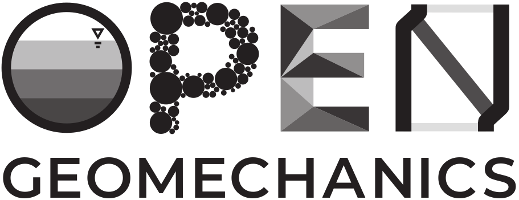Micromechanical Influence of Fabric Anisotropy and Stress Path Dependency on Liquefaction Susceptibility in Granular Soils
This study examines the undrained cyclic behavior of granular assemblies under true triaxial loading, with a particular focus on the micromechanical effects of initial anisotropy and Lode angle. The Discrete Element Method (DEM) is coupled with the Coupled Fluid Method (CFM) to model fluid-solid interactions under undrained conditions. Three transversely isotropic specimens, composed of elongated particles, are generated with bedding plane orientations of 0$^\circ $, 45$^\circ $, and 90$^\circ $ to represent different initial fabric conditions. Simulations are performed under constant mean total stress with a fixed Lode angle. The results reveal that both initial fabric and Lode angle significantly influence liquefaction susceptibility and shear strength. Specifically, increasing the bedding plane angle from 0$^\circ $ to 90$^\circ $ increases the number of loading cycles required to reach liquefaction, primarily due to better alignment between the bedding plane and the major principal stress direction. Furthermore, the Lode angle affects the secant shear modulus and the rate of excess pore pressure generation, underscoring its role in preliquefaction behavior.




